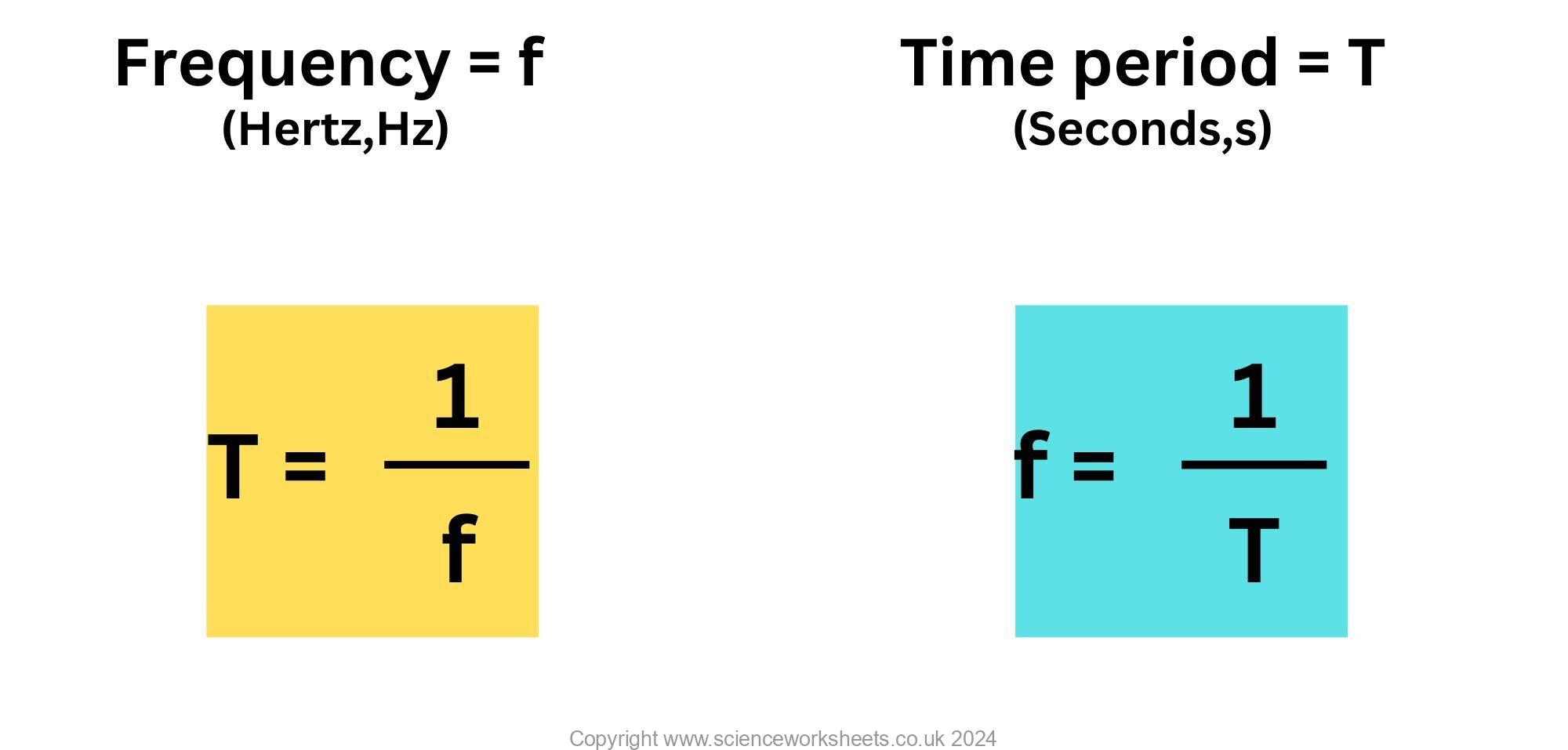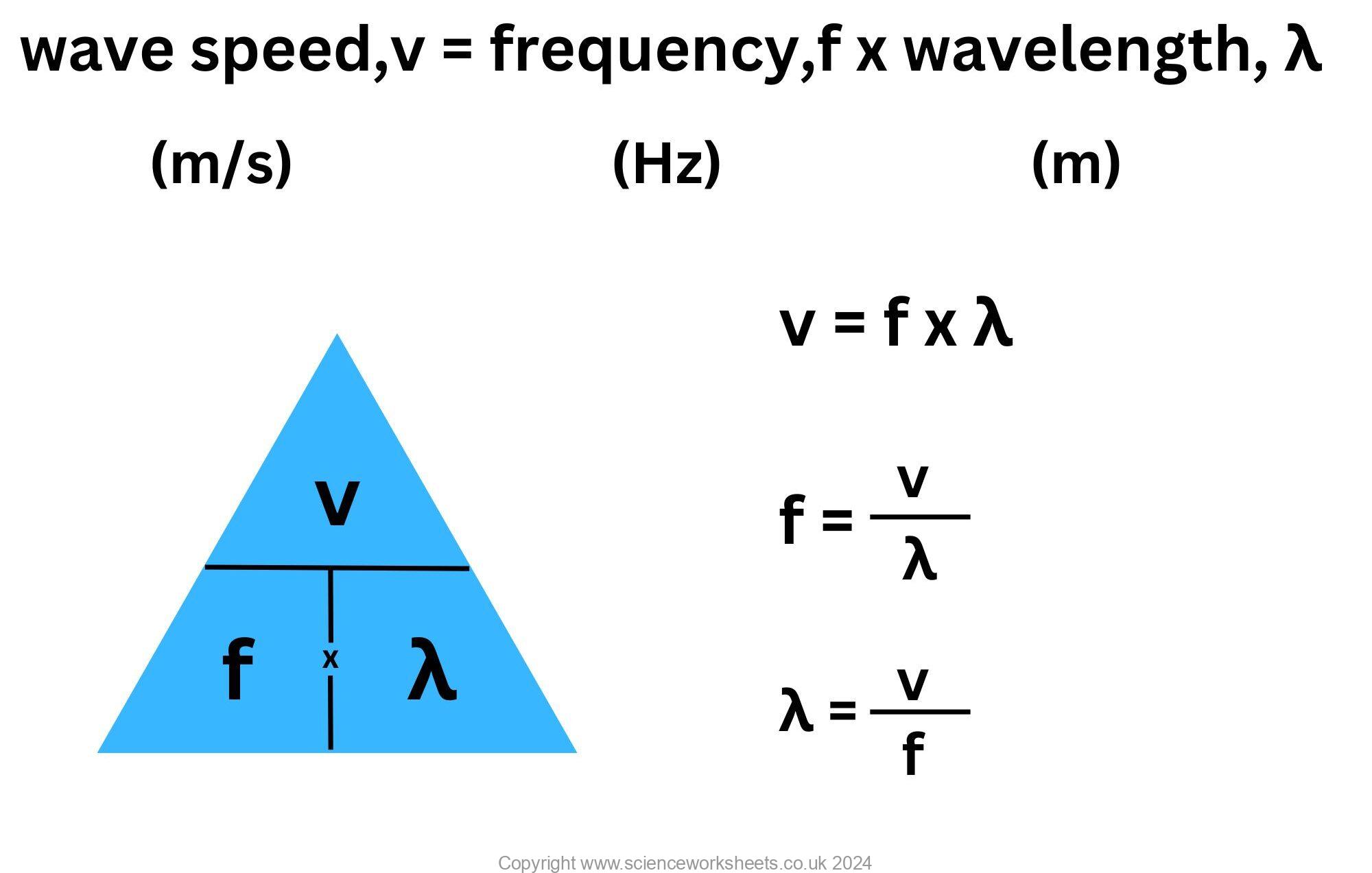Answers to AQA GCSE Characteristics of Waves(Physics)
Practice Question
1.State the definition for wavelength
Wavelength is the distance from one point on a wave, to the same point on the next wave.
2.State the definition for amplitude
Amplitude is the maximum displacement of a point on a wave away from its undisturbed position.
3. State the defintion for frequency
Frequency,f of a wave is the number of waves passing a point each second.
4.State the definition for time period
The time period, or period, T is the time taken for each wave to pass a fixed point.
5. Write the equation which links Time period and frequency

6. Write the equation which links wave speed, frequency and wavelength

7. A wave has a wave speed of 10m/s and a wavelength of 0.1km. Calculate the frequency
Frequency = wave speed/wavelength
0.1km = 100m
Frequency = 10m/s x 100m = 1000Hz
8. Calculate the time period of a wave which has a frequency of 1000kHz.
1000kHz = 1000000Hz
Time period = 1/freqency
Time period = 1/1000000 = 1 x 10-6 seconds
Absorption and Emission of EM Radiation
JJ Thomson and Plum pudding model
Ernest Rutherford and the Nuclear Model
Niels Bohr changing the Nuclear Model
Discovering the Proton and Neutron
Measuring radiation from radioactivity
Radiation types and properties
Random nature of radioactive decay
Radioactive contamination or irradiation
Hazards of contamination and irradiation
Studies on the effects of radiation on humans
Different half lives of radioactive isotopes
Nuclear Fission Chain Reaction
Writing nuclear fission equations
Drawing ray diagrams for a concave lens
Drawing Ray Diagram to produce a virtual image for a convex lens
Drawing ray diagram to produce a real image for a convex lens.
Specular and Diffuse Reflection
Seeing Coloured Objects Part 2
Viewing objects through coloured filters
Transparent, Translucent and Opaque